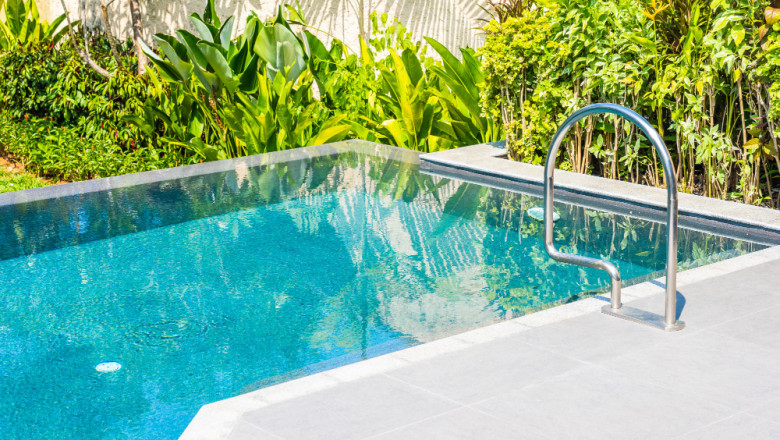views
A Comprehensive Approach to Pool Hygiene Maintenance
A swimming pool is the centrepiece of your home and the perfect spot for fun and leisure with family and friends. But what if you jump into the pool only to find leaves, cloudy water and a slimy floor—yuck, right?
Keeping your pool clean can save you from this unpleasant surprise. Maintaining proper hygiene and cleanliness inside the pool promotes the long lifespan of your pool, making it look good. Furthermore, regular pool cleaning also helps prevent bacteria, algae and dirt from taking over, ensuring a safe and refreshing swim every time.
Here's a comprehensive guide to maintaining the cleanliness and hygiene of your swimming pool. It also includes the edges of pool, be it made of Concrete or Travertine pool coping.
Let's dive in.
Step-by-Step Guide for Cleaning the Pool
1. Skimming
Skimming your pool is the first step to maintaining its cleanliness. Debris, such as insects and leaves can fall into the water daily. And cleaning becomes tough if the debris is allowed to sink to the bottom. That’s why it’s important to use a pool skimmer—a long-handled net—to collect floating debris. You can keep your pool looking new and minimise the effort later by skimming it for a few minutes each day.
2. Rake and Vacuum
Even with frequent skimming, some debris and grime will end up at the pool's bottom. Bigger materials, such as twigs and fallen leaves, can be removed with a pool rake. To remove finer particles, such as sand or debris, after raking, make sure to use a pool vacuum. Although automatic pool vacuums simplify the task, a manual vacuum also performs equally well.
3. Clean the filter
The pool filter works like the lungs of your pool, collecting fine particles like oils and dirt. Your pool water will become dirty if the filter is clogged, reducing its effectiveness. Therefore, you should regularly clean or change the filter, depending on whether it is made of diatomaceous earth (DA), sand or a cartridge. Furthermore, proper water circulation and cleanliness can be maintained with a fast rinse or backwashing, which can reverse the water flow to clear off particles.
4. Check pH levels
For pool water to remain safe and clean, proper chemical balance is required. Water that is too alkaline or acidic can harm pool surfaces or irritate your skin and eyes. Therefore, check the water at least twice a week using a pH test kit. The ideal pH range for your pool is between 7.2 to 7.6 . If the levels are off, add the required chemicals (such as chlorine or pH balancers) to restore balance.
5. Brushing Pool Copings, Walls and Floor
It is obvious that over time, algae and dirt can accumulate on the walls, floor and pool coping (edge of the pool). You should brush these areas occasionally to remove the grime buildup. However, if your pool has natural stone pool coping, you must be gentle while brushing it, as extreme pressure can damage the stone. For instance, if you are using Travertine pool coping, use a soft-bristled brush to avoid any damage to the stone.
6. Water Level
For a pool to work properly, the water level must be maintained. The pump may suffer harm if the water level is too low. It may lessen the skimmer's effectiveness if it is too high. The water should ideally be halfway through the skimmer hole. If necessary, add water with a garden hose or utilise the pool pump system to remove extra water.
7. Shock the Pool
Even with routine upkeep, pool water can sometimes look dull or start to develop a strong chlorine smell due to built-up impurities. To kill bacteria, algae and other organic debris, a strong dose of chlorine or a non-chlorine shock treatment is needed in the pool. It should be done once a week or after heavy use. Before swimming, always wait for the suggested amount of time according to the product's instructions.
Summing it Up!
Maintaining your pool doesn't have to be difficult. To maintain a clean and hygienic pool all season long, follow all these steps: vacuuming, brushing the pool paving, testing pH levels, cleaning the filter, shocking the pool and skimming. Be a little careful if you have installed Travertine pool copings, because being natural stones they are porous in nature. Little
work every week is enough to make your pool welcoming and secure. Are you prepared to jump into a brand-new, sparkling pool? Have fun!






















Comments
0 comment